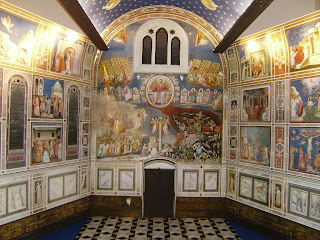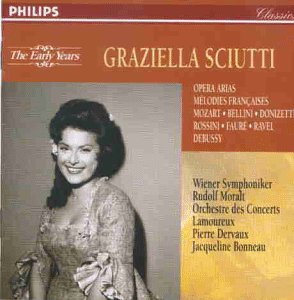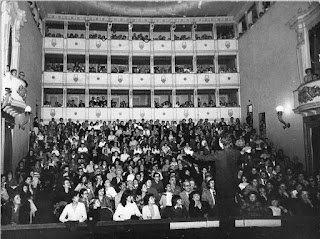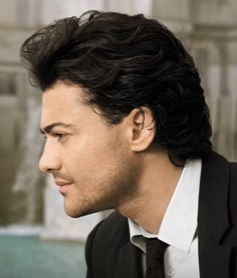Outstanding operatic conductor made recordings with Callas
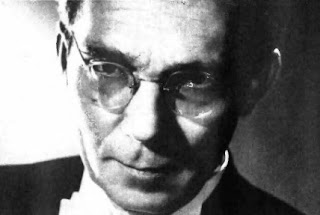 |
| Antonino Votto was regarded as one of the finest conductors of his era |
Operatic conductor Antonino Votto was born on this day in
1896 in Piacenza in Emilia-Romagna.
He became famous in the 1950s because he conducted the
orchestra for the acclaimed recordings made by soprano Maria Callas for EMI.
Votto was also considered one of the leading operatic
conductors of his time on account of his performances at La Scala in Milan, where
he worked regularly for nearly 20 years.
After Votto had attended the Naples conservatory for his
music studies he went to work at La Scala, where he became an assistant
conductor to Arturo Toscanini.
He made his official debut there in 1923, leading a
performance of Puccini’s Manon Lescaut.
Votto went on to build a reputation as one of the most
outstanding conductors of Italian opera, appearing at many other operatic
venues in Italy and abroad.
 |
| Votto taught at the Giuseppe Verdi conservatory in Milan |
In 1941 he began teaching at the Giuseppe Verdi conservatory
in Milan as the war limited operatic activity in Italy and in most parts of
Europe.
One of his students was the present day Italian orchestra
conductor, Riccardo Muti.
Recordings of Votto conducting opera live in the theatre
were a great success. He conducted Bellini’s Norma in 1955 with Callas at La
Scala and La Sonnambula in 1957 with Callas in Cologne. These are both
considered to be great performances.
Votto also made a series of highly successful studio
recordings in the 1950s with Callas, based on productions that had been staged
at La Scala. Their collaborations for EMI on Puccini’s La Bohème and Verdi’s Un
Ballo in Maschera in 1956 and Bellini’s La Sonnambula in 1957 were
enthusiastically received by both the critics and the public.
Votto made his debut at Covent Garden in 1924 with
performances of Puccini’s Madame Butterfly and Leoncavallo’s I Pagliacci.
His American debut came in 1960 when he appeared at the
Chicago Opera House conducting Verdi’s Aida and Don Carlo.
Votto continued conducting at La Scala until 1967 and died
in Milan in 1985.
 |
| The bronze statue of Ranuccio II Farnese by Francesco Mochi is a feature of Piazza Cavalli in Piacenza |
Travel tip:
Piacenza, where Votto was born, is a city in the Emilia
Romagna region of northern Italy. The main square is named Piazza Cavalli
because of its two bronze equestrian monuments featuring Alexander Farnese,
Duke of Parma and his son Ranuccio II Farnese, Duke of Parma, who succeeded him.
The statues are masterpieces by the sculptor Francesco Mochi.
 |
| Teatro alla Scala is Italy's most prestigious opera house |
Travel tip:
Teatro alla Scala, where Votto conducted for 20 years, is in
Piazza della Scala in the centre of Milan across the road from the Galleria
Vittorio Emanuele II, an elegant arcade lined with cafes, shops and
restaurants. It was built to link Piazza della Scala with Piazza del Duomo,
Milan’s cathedral square. La Scala has a fascinating museum that displays
costumes and memorabilia from the history of opera. The entrance is in Largo
Ghiringhelli, just off Piazza della Scala. It is open every day except the
Italian Bank Holidays and the days when it is closed in December. Opening hours
are from 9.00 to 12.30 and 1.30 to 5.30 pm.






